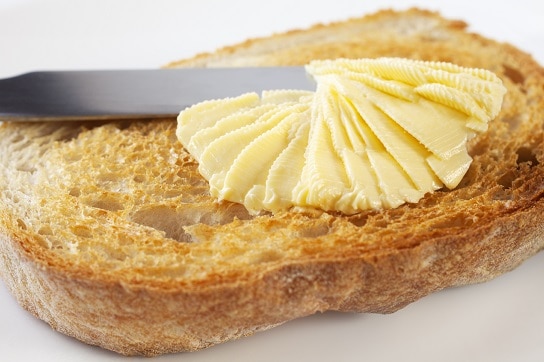 Insulin is by far the most important acne hormone you need to focus on. Forget estrogen, forget testosterone, forget DHT; if you don’t control your insulin you’ll have acne forever. Diabetes and insulin resistance, diseases born from high levels of insulin, are more common than ever and acne vulgaris is a simple extension of that.
Insulin is by far the most important acne hormone you need to focus on. Forget estrogen, forget testosterone, forget DHT; if you don’t control your insulin you’ll have acne forever. Diabetes and insulin resistance, diseases born from high levels of insulin, are more common than ever and acne vulgaris is a simple extension of that.
In short, insulin causes acne by generating too much insulin-like growth factor (IGF-1). IGF-1 stimulates the sebaceous glands to produce more sebum, clogging your pores and giving you acne. Furthermore, IGF-1 enhances the power of DHT and testosterone to do the exact same thing.
There’s one elephant in the room when it comes to high insulin; the whole grain-based, high-carb low-fat dietary consensus invented in the 1970s. Too many carbs, accepted for decades as the standard desirable diet for health, is the biggest cause of high insulin levels and one of the biggest causes of acne full-stop…
…but what’s less widely known is all the secret foods, supplements, and lifestyle hacks that can lower insulin. Essentially, any action which increases the power of the same quantity of insulin, or the receptiveness of a glycogen store, will allow your blood insulin levels to fall.
Hence, here’s thirty different ways you can lower insulin, make your skin less oily, and enjoy far clearer and healthier looking skin.
One – eat less carbohydrates
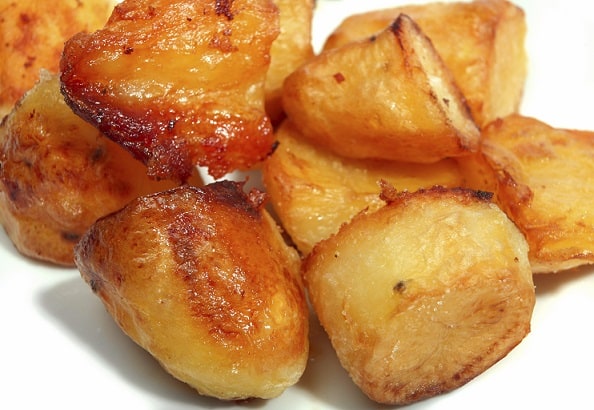 We’ve discussed the main scenario of elevated insulin levels numerous times on this website. Basically, eating too many carbohydrates leads to your glycogen (energy) stores becoming full, insulin fails to work on those stores anymore, and your body cranks up insulin production to remove the excess glucose now accumulating in the bloodstream.
We’ve discussed the main scenario of elevated insulin levels numerous times on this website. Basically, eating too many carbohydrates leads to your glycogen (energy) stores becoming full, insulin fails to work on those stores anymore, and your body cranks up insulin production to remove the excess glucose now accumulating in the bloodstream.
It’s estimated that the average man got nearly 50% of his calories from carbohydrates in the year 2004. Many will have got far more.
Read Annihilate Your Acne – get the ultimate diet and clear your acne permanently!
In the last decade, the pendulum has slowly swung back towards a moderate fat and moderate carbohydrate diet. Don’t miss out! Eat less bread, pasta, and rice, but by how much you cut carbs depends on your exercise levels.
Don’t get tempted to enter ketosis, where you cut carbs so low that your body burns fat for fuel, as this leads to insulin resistance itself. Aim for a balance between energy intake and energy expenditure.
Two – eat cinnamon
 Cinnamon is famous for providing flavour to buns and cookies and is a household spice, but in the medical world it is most famous for lowering insulin and blood sugar. This study found that cinnamon contains two compounds called eugenol and cinnamaldehyde which increase insulin sensitivity in the brain.
Cinnamon is famous for providing flavour to buns and cookies and is a household spice, but in the medical world it is most famous for lowering insulin and blood sugar. This study found that cinnamon contains two compounds called eugenol and cinnamaldehyde which increase insulin sensitivity in the brain.
Many studies on animals also show that cinnamon increases glycogen store insulin sensitivity. The greatest study of all shows that feeding 1, 3, or 6 grams of cinnamon to human beings resulted in a precipitous drop in blood glucose of 18-29%, offering strong evidence that insulin’s function is enhanced.
The top 7 topical treatments for clearing acne naturally
Be savvy though; it is Ceylon cinnamon, not the common cassia cinnamon also known as “bastard cinnamon”, which has the strongest insulin lowering, acne-curing benefits. Also, if you buy a good bulk brand it can last for months and months, since you only need a teaspoon a day to benefit.
A product which is officially organic and most definitely ceylon cinnamon is this 1 pound bag of Healthworks Organic Ceylon Cinnamon Powder (amazon link).
Three – take a berberine supplement
Berberine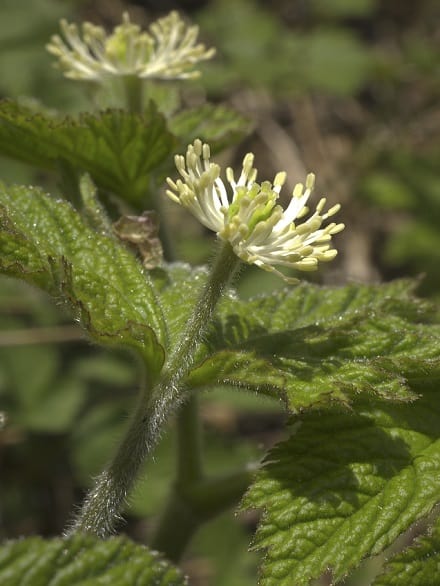 is an extremely promising herbal supplement for acne patients. This yellow alkaloid derived from plants such as the European barberry, goldenthread and the Oregon grape can lower both insulin levels and blood sugar levels, seemingly by increasing insulin sensitivity.
is an extremely promising herbal supplement for acne patients. This yellow alkaloid derived from plants such as the European barberry, goldenthread and the Oregon grape can lower both insulin levels and blood sugar levels, seemingly by increasing insulin sensitivity.
A 2008 study performed on 36 patients found that 1000-1500mg of berberine extract per day lowered blood insulin by 44% and insulin resistance by 28%, all within a few days. One big review of 14 studies found that berberine extracts are equally as effective at lowering insulin as the common diabetes drugs metformin, glipizide, and rosiglitazone.
Another study, performed in Iran, found that supplementing the diets of acne patients with berberine for four weeks led to a staggering 45% reduction in acne lesions. Coincidence? Not likely! The best berberine supplement is aSquared Nutrition Pure Berberine Supplement (amazon link).
Four – take a magnesium supplement
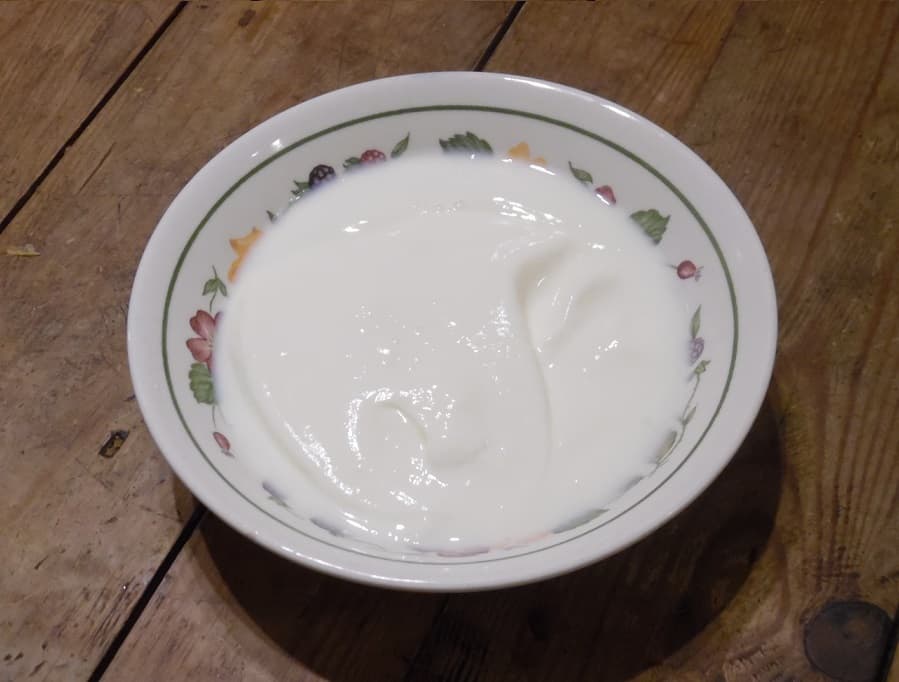 The mineral magnesium is notable for controlling lots of cellular signalling in the body, and one such cellular signal is insulin responsiveness.
The mineral magnesium is notable for controlling lots of cellular signalling in the body, and one such cellular signal is insulin responsiveness.
Basically, magnesium has been shown in studies to directly lower insulin levels; 27 patients were fed magnesium aspartate-hydrochloride, and 25 a placebo, and after six months the magnesium group had lower insulin levels (study).
Diabetics also have far lower magnesium levels than the general population. According to this study: “a tendency for magnesium deficiency in patients with diabetes mellitus is well-established”.
Recommended reading – the top 6 vitamins and minerals for acne-free skin
Magnesium deficiency is an epidemic, which is great news, because it means you have huge room for improvement in your acne. Magnesium levels are depleted in soils in almost the entire world, and there are few stellar sources as with oysters for zinc, so I recommend a supplement.
Every day, I use this Ancient Minerals Magnesium Oil (amazon link). It’s easily the best absorbed supplement I’ve taken, mainly because it is absorbed directly into the bloodstream. If you develop a minor, patchy red rash after your first usage, that’s a big sign of deficiency, as is a tingling sensation. Those symptoms fade with daily usage. Meanwhile, the best convenient pill is this Pure Encapsulations Magnesium Glycinate (amazon link).
Five – eat dark chocolate
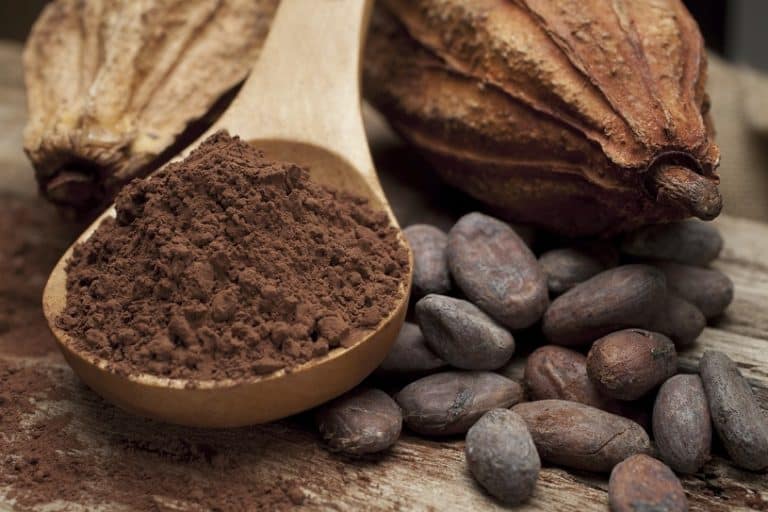
Better yet, you could feast on some high cocoa (85% plus) dark chocolate, which contains 12-13% of the RDA for magnesium per 20 gram serving.
Dark chocolate has many different flavonoids, stimulants, polyphenols and healthy acids too; this study found that 20 daily grams of polyphenol-rich dark chocolate caused a significant lowering of insulin levels and improvement in insulin sensitivity.
Another study tested 15 people with either 90 grams of white chocolate or 100 grams of dark chocolate; insulin resistance was significantly lower in the dark chocolate group and insulin sensitivity was significantly higher. Interestingly, systolic blood pressure was also far lower in the dark chocolate group.
Chocolate is also an ideal acne-friendly snack; cocoa does NOT cause acne and it can satisfy any cravings for sugar you may have when attempting to slash your intake. Dark chocolate contains tons of antioxidants as well, which protect insulin molecules from damage (see below).
Why bread and pasta are a massive cause of acne
Dark chocolate is a delicious acne-healing snack. If you’re a culinary expert you can even create a special recipe flavoured with ginger, or cinnamon, or another flavouring on this list to create an insulin lowering superfood.
Six – take vitamin D
Vitamin D performs almost exactly the same function as magnesium; it’s needed for the signals which allow the glycogen stores to recognise and respond to insulin.
performs almost exactly the same function as magnesium; it’s needed for the signals which allow the glycogen stores to recognise and respond to insulin.
Scientists gave 126 volunteers vitamin D3 supplements, with the patients’ blood levels having been measured beforehand. A positive relationship between blood vitamin D levels and insulin sensitivity was observed. The scientists reached the conclusion that “subjects with hypervitaminosis D (severe deficiency) are at higher risk of insulin resistance” (study).
To get more vitamin D, simply expose yourself to more sunlight each day. To get more vitamin D in winter, simply take this pure NatureWise Vitamin D3 (amazon link) each day, which also contains extra virgin olive oil for enhanced absorption.
Seven – eat oysters
Oysters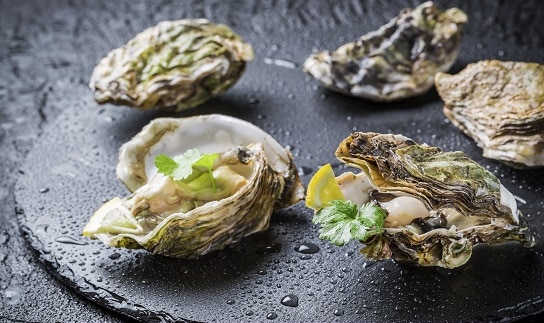 are the world’s best source of zinc; 100 grams worth contains 91mg, nearly six times as much as the next best source. This study observed a positive correlation between zinc levels and insulin sensitivity.
are the world’s best source of zinc; 100 grams worth contains 91mg, nearly six times as much as the next best source. This study observed a positive correlation between zinc levels and insulin sensitivity.
This 2013 study examined 78 obese teenagers, measured their blood levels of several minerals, and found a significant inverse relationship between zinc levels and insulin resistance. The conclusion was: “obese adolescents have a poorer mineral status (especially zinc) than adolescents of normal weight, which can contribute to insulin resistance”.
Eight – go skiing
Almost all forms of exercise can contribute to lower insulin since they empty your glycogen stores, meaning that they can accept more of the glucose insulin carries. But high altitude exercise seems to have its own benefits.
In a study performed in 2013, scientists discovered that hiking at 4500 metres led to substantial improvements in insulin sensitivity. The scientists theorised that the lack of oxygen did the trick; previous studies on rats revealed that their insulin sensitivity increased under hypoxia regardless of exercise.
How do you accomplish this? Skiing fits the bill perfectly. As well as being hard on the legs and properly exhausting if you ski the difficult pistes, you’ll also get a large dose of fresh air and plenty of sunlight. In the summer, mountain climbing is the best choice, or cycling on high mountain trails.
Nine – go walking daily
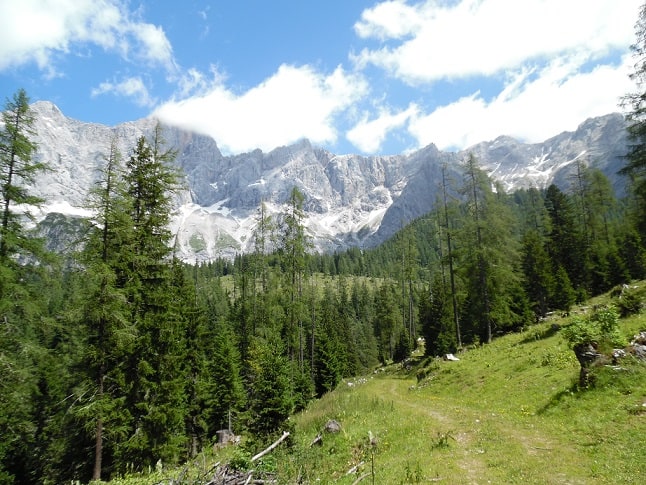 Walking may not be most heart-pumping and strenuous exercise but it’s still effective at emptying glycogen stores and restoring their insulin sensitivity. You still burn the energy you consume through carbohydrates.
Walking may not be most heart-pumping and strenuous exercise but it’s still effective at emptying glycogen stores and restoring their insulin sensitivity. You still burn the energy you consume through carbohydrates.
One study divided 20 obese women into a) an exercise group, or b) an inactivity group. Group B maintained their sedentary lifestyle, while group A walked for 50-70 minutes per day, three times per week. Group A experienced a significant reduction in insulin resistance and blood glucose, as well as the inflammatory chemicals TNF-a and IL-6.
There was also an increase in the protein adiponectin, which is known to fall in correlation with insulin resistance and diabetes. A similar study with similar results was performed on obese Japanese men.
Ten – do some explosive exercise
 The more rapidly you can drain the glycogen crammed into your glycogen stores, the more sensitive to insulin they will become. Walking is great for a slow decrease and for maintaining a healthy insulin level, but cycling uphill, lifting very heavy weights or any exercises that require real effort and exertion are the real deal. Both of those sports are extremely fast ways to use up energy, as is rowing, sprinting, and swimming.
The more rapidly you can drain the glycogen crammed into your glycogen stores, the more sensitive to insulin they will become. Walking is great for a slow decrease and for maintaining a healthy insulin level, but cycling uphill, lifting very heavy weights or any exercises that require real effort and exertion are the real deal. Both of those sports are extremely fast ways to use up energy, as is rowing, sprinting, and swimming.
Lifting heavy weights is perhaps the most effective ever as by its nature, the exercise deliberately focuses strain and exertion on the muscles, and hence the muscle glycogen stores. It’s especially potent compared to cardiovascular exercise such as steady cycling. Research also suggests that after a heavy weightlifting suggestion, the glycogen stores immediately suck in glucose from the bloodstream with no involvement from insulin, thus reducing the need for higher blood insulin levels further.
Eleven – eat macadamia nuts
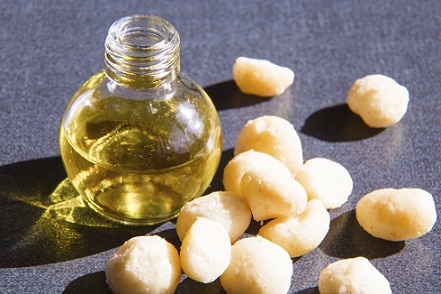 Macadamia nuts are considered to be one of the healthiest nuts, and that’s true for acne. Firstly, they’re far lower in inflammatory omega 6s compared to almonds or pistachios.
Macadamia nuts are considered to be one of the healthiest nuts, and that’s true for acne. Firstly, they’re far lower in inflammatory omega 6s compared to almonds or pistachios.
Secondly, the vast majority of their fat content is the stable monounsaturated fat, rather than the polyunsaturated fats of almonds and cashews which increase acne-causing free radicals in the body. Macadamia nuts are ideal for an acne-friendly snack but their claim to fame is their magnesium content. 50 grams of macadamia nuts contains 16% of the daily allowance.
Such killer sources of magnesium are few and far between. Additionally, compared to most nuts, macadamia nuts are very low in lectins and phytic acid, which bind to and inhibit the absorption of magnesium. A good bulk brand is this Sunfood Organic Macadamia Nut bag (amazon link).
Twelve – eat more antioxidants
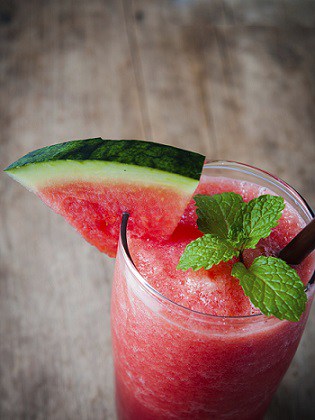 A diet rich in fruits, vegetables, spices and herbs is critical for acne in many ways, including keeping insulin down. Insulin molecules are highly vulnerable to oxidation – attack by free radicals – and this makes them less effective at activating glycogen stores. Antioxidants are designed to prevent this from happening. Some, such as resveratrol in red wine, are particularly effective.
A diet rich in fruits, vegetables, spices and herbs is critical for acne in many ways, including keeping insulin down. Insulin molecules are highly vulnerable to oxidation – attack by free radicals – and this makes them less effective at activating glycogen stores. Antioxidants are designed to prevent this from happening. Some, such as resveratrol in red wine, are particularly effective.
One study divided 29 obese patients into four groups, 1) a Mediterranean diet with moderate antioxidant levels, 2) the same diet plus the diabetes drug metformin, 3) a high antioxidant diet, and 4) the high antioxidant diet plus metformin. The antioxidants came from a wide variety of foods: wild berries, orange juice, tea, chicory, carrots, capers, and tomatoes. Groups 3 and 4 developed a far healthier insulin profile, with decreased insulin resistance and blunted insulin spikes after meals.
Thirteen – eat turmeric
Turmeric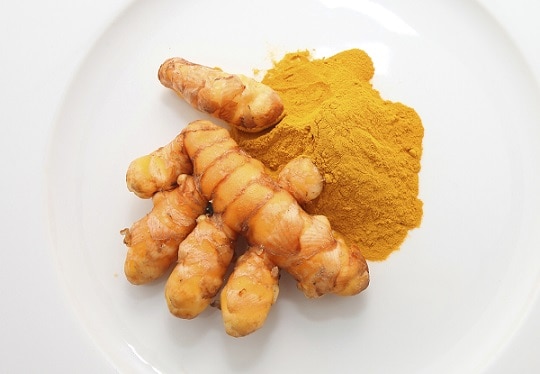 , the strong orange spice commonly found in Indian curries, is famous for its active medicinal compound curcumin. Curcumin has anti-inflammatory powers which rival pharmaceutical drugs, and what’s more, one study found it could prevent 100% of type 2 diabetes cases.
, the strong orange spice commonly found in Indian curries, is famous for its active medicinal compound curcumin. Curcumin has anti-inflammatory powers which rival pharmaceutical drugs, and what’s more, one study found it could prevent 100% of type 2 diabetes cases.
Scientists fed curcumin to one group and a placebo to the other. While nobody in group 1 developed T2D, 16% of group B did. The scientists specifically commented that the insulin receptor cells of group A patients had grown more sensitive. A Japanese study also found that turmeric improved insulin sensitivity and in addition to curcumin, antioxidant compounds called demethoxycurcumin, bisdemethoxycurcumin, and ar-turmerone had the power.
Last but not least, turmeric is extremely high in antioxidants. Turmeric has an endless array polyphenols and flavonoids and has an ORAC score of 127,068; broccoli scores just 1510. Even better, curcumin has been shown in studies to increase the human body’s production of the all-important acne antioxidant glutathione, which is vital for protecting insulin from oxidation.
If you want to experience all the acne-clearing benefits of curcumin but hate the taste of turmeric, then you can take this aSquared Nutrition Pure Turmeric Curcumin (amazon link), which comes with added piperine to maximise the absorption.
Fourteen – take vitamin K2
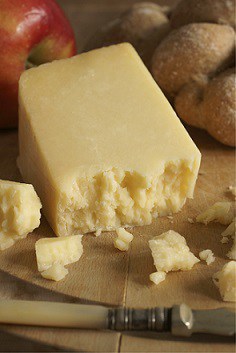 The majority of the public is criminally unaware of vitamin K2 – they’re familiar with vitamin K, but the form which occurs in most fruits, vegetables and herbs is vitamin K1. That’s a relatively common version needed to prevent blood clotting and bruising.
The majority of the public is criminally unaware of vitamin K2 – they’re familiar with vitamin K, but the form which occurs in most fruits, vegetables and herbs is vitamin K1. That’s a relatively common version needed to prevent blood clotting and bruising.
Vitamin K2, meanwhile, is the holy grail of nutrition. Gut bacteria in your stomach can convert vitamin K1 to K2, but with the average man’s compromised gut flora today, this doesn’t produce what we need. Vitamin K2 is very important for activating calcium and shuttling it to bones and teeth where it’s needed.
K2 was also demonstrated in this study and this study to have a beneficial impact on insulin resistance. This is important because vitamin K2 deficiency is an unknown epidemic. Most people don’t know it exists, let alone realise they need more.
Top food sources include the Japanese soybean dish natto, dark chicken meat, organ meats, aged cheese like cheddar, brie and Gouda and fermented foods such as sauerkraut. If you don’t like those foods then a good supplement is Nature’s Plus Vitamin K2 (amazon link). An added bonus is that vitamin K2 is important for heart health and for the reason above, may prevent osteoporosis.
Fifteen – eat less fructose, especially refined fructose
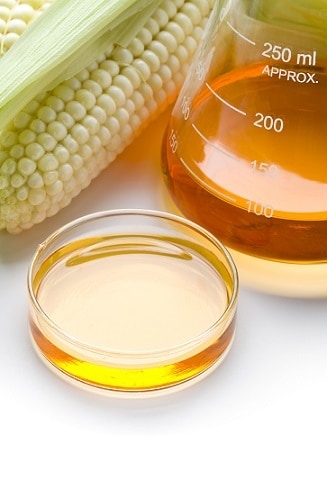 Fructose might be delicious in cakes, chocolate, cookies and all its various forms. But while you drink a glass of orange juice with no fiber, all the natural sugar from a bag of oranges, and added sugar to boot, that sugar flows straight to your liver and turns to fat.
Fructose might be delicious in cakes, chocolate, cookies and all its various forms. But while you drink a glass of orange juice with no fiber, all the natural sugar from a bag of oranges, and added sugar to boot, that sugar flows straight to your liver and turns to fat.
Unlike glucose, only the liver can convert fructose to glycogen. If the fructose floods in too quickly, the liver cannot process it all at once and thus stores some sugar as fat. Over many years, increasing fat build up leads to a condition called non-alcoholic fatty liver disease (NAFLD), where fat slowly chokes out the liver’s important functions.
It’s estimated that 100 million Americans have fatty liver disease to some degree. How does this cause acne? One of the liver’s important functions is as a store for glycogen. A fatty liver can impair those stores and their responsiveness to insulin.
The solution? Follow this guide on minimising your sugar intake.
Sixteen – eat ginger
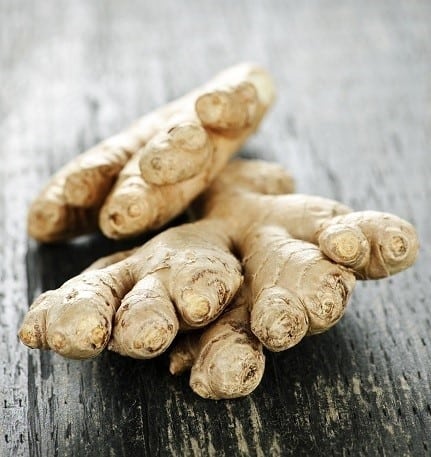 The tasty spice ginger is high in gingerols and countless other phytonutrients. Ginger is a fantastic source of antioxidants, with an ORAC score of 39,041. They will lower insulin levels themselves, and many studies have confirmed ginger’s power directly.
The tasty spice ginger is high in gingerols and countless other phytonutrients. Ginger is a fantastic source of antioxidants, with an ORAC score of 39,041. They will lower insulin levels themselves, and many studies have confirmed ginger’s power directly.
This study commented that “ginger has been shown to modulate insulin release. Ginger promotes glucose clearances in insulin responsive peripheral tissues”. When treated with gingerols, cells reportedly become more responsive to insulin dependent glucose uptake (study).
The best evidence is this double-blind, placebo controlled study which divided 88 diabetic patients into two groups. Group one received 3 one-gram capsules containing ginger powder whereas the placebo group took 3 one-gram microcrystalline-containing capsules daily for 8 weeks.
The ginger group enjoyed a decrease of fasting blood sugar by of 10.5%, whereas the placebo group experienced an increase in FBS of 21%. Most importantly, both insulin resistance and insulin levels were found to be lower in the ginger group.
Hence you should add ginger to your cooking in imaginative ways as much as you can. For a 1 pound bulk bag which will provide months of skin-clearing goodness, this Anthony’s Goods Organic Ground Ginger (amazon link) is perfect, and free from any pesticides and contaminants.
Seventeen – eat garlic
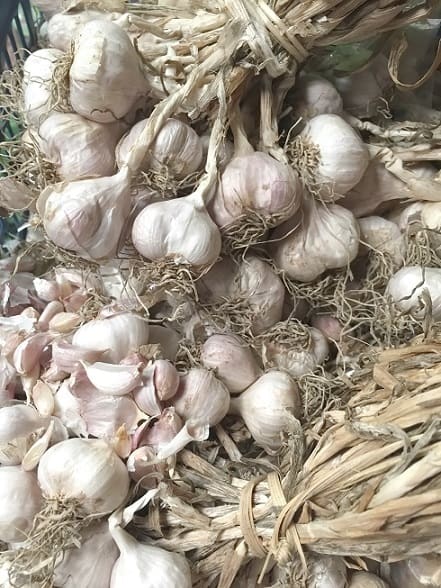 Firstly, garlic cloves are easily the single most powerful antioxidant food in the world thanks to various sulphurous compounds such as allicin. Studies have found that during digestion, allicin breaks down into sulfenic acid, a compound which reacts with free radicals faster than any other substance known to mankind. Not to mention that garlic has an ORAC score of 314,446, the highest score yet recorded.
Firstly, garlic cloves are easily the single most powerful antioxidant food in the world thanks to various sulphurous compounds such as allicin. Studies have found that during digestion, allicin breaks down into sulfenic acid, a compound which reacts with free radicals faster than any other substance known to mankind. Not to mention that garlic has an ORAC score of 314,446, the highest score yet recorded.
Secondly, garlic contains very many different sulphurous compounds, which is partially why it gives you bad breath upon contact with the saliva in your mouth. Hence it can increase the generation of the antioxidant glutathione, for which sulphur is a key ingredient. This study found that acne-prone skin contains 20% less glutathione than usual.
Usually I would offer a link to some top value ground garlic powder here, but the interesting thing about garlic is that cutting and grinding it down destroys many of the useful molecules such as allicin. Hence to push your skin to the limit its far better to buy conventional garlic bulbs (orrganic is unnecessary – insects hate it) and grind them down yourself while remembering to use the powder within 24 hours.
Eighteen – avoid BPA
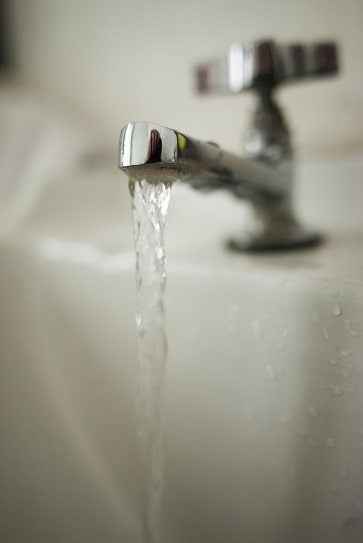 BPA is a chemical invented in 1891 by a Russian chemist that during the 124 years since has wormed its way into endless consumer products – including plastic, shower curtains, tap water, children’s toys, and drinking bottles. We are exposed to BPA on a daily basis, but the ubiquitous chemical is now being sunk by never-ending controversy.
BPA is a chemical invented in 1891 by a Russian chemist that during the 124 years since has wormed its way into endless consumer products – including plastic, shower curtains, tap water, children’s toys, and drinking bottles. We are exposed to BPA on a daily basis, but the ubiquitous chemical is now being sunk by never-ending controversy.
The problem is that since the 1930s, when BPA was found to mimic the female hormone estrogen, a constantly expanding avalanche of evidence has accused BPA of causing fertility problems, brain damage, chronic inflammation and every nasty condition under the sun.
Insulin resistance is just one of those conditions. This study observed a positive correlation between urinary BPA levels and insulin resistance in Chinese men. According to this study: “long-term oral exposure to BPA induced glucose intolerance and insulin resistance in growing mice”.
Luckily, you can remove a big chunk of daily BPA exposure by reading this article.
Nineteen – sleep more efficiently
 Sleep is needed to repair almost all functions of your body and brain and keep them efficient for the next day. Therefore it’s natural that sleep deprivation can affect the sensitivity of insulin receptors.
Sleep is needed to repair almost all functions of your body and brain and keep them efficient for the next day. Therefore it’s natural that sleep deprivation can affect the sensitivity of insulin receptors.
One study found that after a sleep deprived night of only four hours, insulin sensitivity dropped by 16%. These days one third of all Americans suffer from sleep deprivation. Furthermore, sleep deprivation leads to a sharper spike in stress hormones in the morning which further messes up the delicate insulin system.
What’s lucky is that just one or two extra hours of sleep per night can totally reverse the damage, so that’s what you should do. Some useful tips for beating sleep deprivation include: sleeping in a completely dark room, eating a meal of carbohydrates before bed, supplementing with zinc, taking grass-fed gelatin, and eating pineapple.
Also, the so-called relaxation mineral magnesium is great for sleeping soundly and effectively, as it’s a vital ingredient in melatonin synthesis. Take Pure Encapsulations Magnesium Glycinate (amazon link) for two weeks and getting into bed is like getting knocked out.
Twenty – avoid mercury
Mercury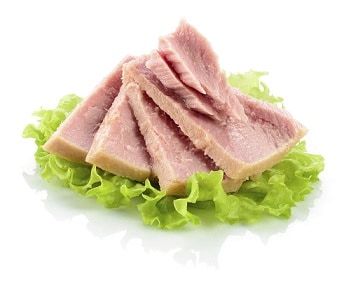 is a heavy metal which makes up 50% of standard amalgam dental fillings and has done since before the American civil war. It’s also highly toxic to wildlife and can wreck your health slowly and insidiously.
is a heavy metal which makes up 50% of standard amalgam dental fillings and has done since before the American civil war. It’s also highly toxic to wildlife and can wreck your health slowly and insidiously.
Mercury is basically the opposite of vitamin D; while one restores your endocrine system and cellular signalling, the other will ruin it. Mercury is the most toxic heavy metal by far, more toxic than even acne-causing arsenic, the dreaded lead and cadmium.
This study found a correlation between blood mercury levels and insulin resistance in Koreans. This study found that serum mercury and a class of toxins called dioxins were correlated with higher levels of insulin resistance. This decades long study found that exposure to mercury led to a higher risk of diabetes in later life.
Twenty-one – say no to fluoride
Sodium fluoride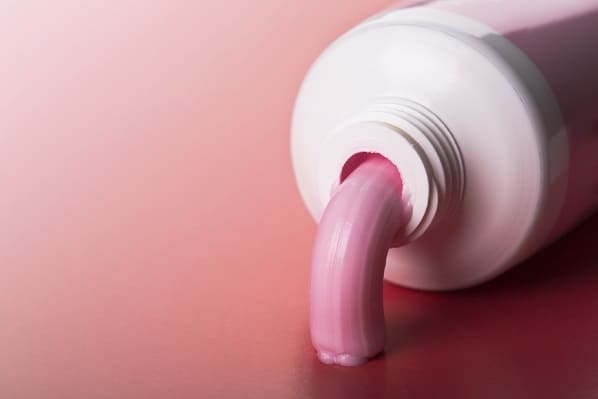 is one of the favourite punchbags of alternative health websites and conspiracy theorists, some of whom believe that fluoride was slipped into toothpaste as an enamel strengthening agent with the actual intent being to dumb down the general population. They say that because fluoride has been proven to lower IQ in this study, this study and this study.
is one of the favourite punchbags of alternative health websites and conspiracy theorists, some of whom believe that fluoride was slipped into toothpaste as an enamel strengthening agent with the actual intent being to dumb down the general population. They say that because fluoride has been proven to lower IQ in this study, this study and this study.
It’s also claimed that fluoride in fact has little strengthening effect on tooth enamel at all. The truth is controversial but what’s absolutely certain is that too much fluoride intake can cripple your health in more ways than one. Insulin resistance is one major side effect, according to this study where insulin resistance increased in rats fed fluoride in drinking water.
Whether it strengthens your teeth or not, I advise you minimise your fluoride intake and maintain gum health through more natural methods (baking soda as toothpaste, keeping your nutrient intake high, avoiding added sugar).
Twenty-two – season dishes with vinegar
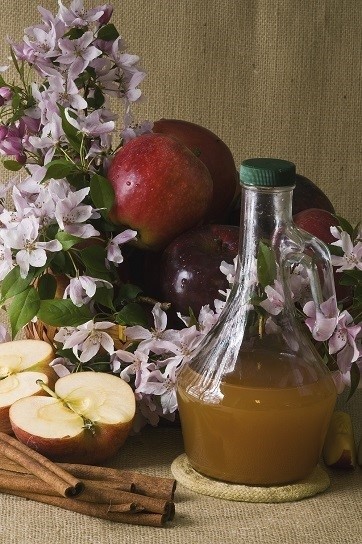 Popular vinegars like apple cider vinegar are among the most interesting health foods because they contain almost no nutrients, almost no antioxidants and few trace phytonutrients, yet still have health benefits. Apple cider vinegar is claimed to treat athlete’s foot, gout, and warts, head lice, and was used to clean wounds in the American civil war. It’s believed to treat cancer, acid reflux, and nettle stings, and is even available as a pill-based supplement.
Popular vinegars like apple cider vinegar are among the most interesting health foods because they contain almost no nutrients, almost no antioxidants and few trace phytonutrients, yet still have health benefits. Apple cider vinegar is claimed to treat athlete’s foot, gout, and warts, head lice, and was used to clean wounds in the American civil war. It’s believed to treat cancer, acid reflux, and nettle stings, and is even available as a pill-based supplement.
Many of those claims are pure myth, but vinegar does have a strong ability to blunt insulin spikes following a meal. A study by the American Diabetes Association divided 29 volunteers into two groups and found that apple cider vinegar successfully reduced the post-prandial increase in insulin and blood glucose. Another study found that a meal seasoned with vinegar improved insulin sensitivity in 19% with diabetes and 34% of patients with prediabetes.
Responsible for these benefits is vinegar’s high levels of acetic acid, which slows the digestion of carbohydrates down. Additionally, acetic acid can join forces with stomach acid and accelerate the digestion of nutrients like zinc and magnesium which can suppress insulin themselves.
The simple solution: add vinegar to your meals wherever you deem appropriate.
Twenty-three – don’t fear coffee
 Many diabetics are terrified and disappointed that with their new condition, coffee must now become a forbidden indulgence. They often read in the newspapers or get told by their doctors that caffeine is an insulin spiking nightmare due to its ability to raise free fatty acids in the bloodstream, which is known to lessen the power of insulin.
Many diabetics are terrified and disappointed that with their new condition, coffee must now become a forbidden indulgence. They often read in the newspapers or get told by their doctors that caffeine is an insulin spiking nightmare due to its ability to raise free fatty acids in the bloodstream, which is known to lessen the power of insulin.
Well, true that may be, but here’s another truth: coffee is not just caffeine. Coffee beans are bursting with lignans, flavonoids, dipertenes, healthy acids, antioxidants, kahweol, quinides, chlorogenic acid, and tons more.
Whole coffee is a completely different ball-game to isolated caffeine, and the same is true with its effects on insulin. Studies on caffeine may be negative, but this study found that quinides in coffee enhanced the potency of insulin. This study found that the chlorogenic acid in coffee increased production of glucagon-like peptide 1, a peptide which increases glucose absorption.
Too much coffee WILL cause a caffeine overdose, but two cups per day is completely safe. So if you’re a coffeeholic, go drink up and have no regrets about it.
Twenty-four – increase your glutathione levels
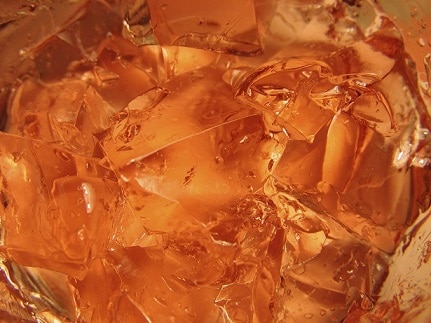 It is vital to increase your serum antioxidant levels to protect your insulin molecules from damage but eating 5 servings of fruit and veg per day is only one piece of the puzzle. The human body manufactures many antioxidants by itself and the most important one by far is glutathione.
It is vital to increase your serum antioxidant levels to protect your insulin molecules from damage but eating 5 servings of fruit and veg per day is only one piece of the puzzle. The human body manufactures many antioxidants by itself and the most important one by far is glutathione.
In fact, increasing your glutathione levels is especially critical in this day and age. Because glutathione also acts as a stage 2 detoxifying agent, removing many harmful chemicals and heavy metals (like mercury and BPA) from the body, the overabundance of environmental contaminants found in today’s world means that depleted glutathione levels are an epidemic.
Why using raw honey could revolutionise your skin
Some of the most important steps are very simple. Get your magnesium, zinc and selenium levels in check as they are the holy trinity of minerals used to manufacture glutathione. Alcohol can cause acne by depleting glutathione (although a beer a week won’t hurt you). Then there’s a bunch of secondary strategies which you can read about here.
Twenty-five – eat fermented foods
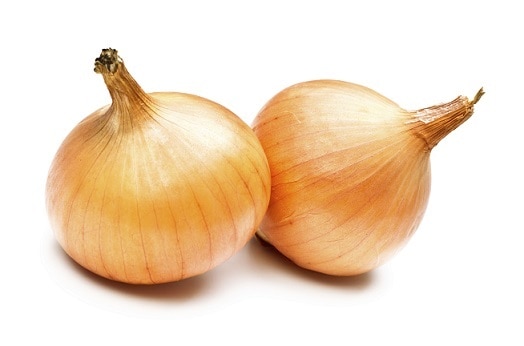 Over the last five years a ton of research has been performed on human gut flora and its importance to overall health. Every week, new stories pop up in health magazines; gut bacteria is the secret to weight loss, gut bacteria is the miracle cure for depression, prebiotics can fix an upset stomach…
Over the last five years a ton of research has been performed on human gut flora and its importance to overall health. Every week, new stories pop up in health magazines; gut bacteria is the secret to weight loss, gut bacteria is the miracle cure for depression, prebiotics can fix an upset stomach…
…and as you might have guessed, connections to insulin resistance and diabetes are being investigated too. A recent study found that mice with high levels of bacterial strains were at higher risk of insulin resistance, obesity, and out-of-control hunger. Preliminary studies on humans suggest the same results.
What does this mean for you? You should take action to eat foods that both increase healthy bacterial strains in your gut and encourage a wide diversity of those strains. That means eating fermented foods like yoghurt, sauerkraut, natto (also a fantastic source of vitamin K2), kefir, and aged cheeses like blue cheese. Secondly, you should eat plant foods with prebiotic compounds like inulin, insoluble fiber, and flavonoids such as garlic, onions, broccoli, kale, apples, and dark chocolate.
Twenty-six – relieve stress
 The stress hormone cortisol is very important for health but when you get chronically anxious and stressed out and cortisol becomes chronically elevated, the body begins to deteriorate rapidly.
The stress hormone cortisol is very important for health but when you get chronically anxious and stressed out and cortisol becomes chronically elevated, the body begins to deteriorate rapidly.
In nature, cortisol performs a very useful function that allows us to escape danger unscathed; if we see a bloodthirsty lion, for instance, and we become stressed out, the mental anxiety will trigger an increase in stress hormones. Cortisol then increases your blood glucose levels, giving you a burst of energy needed to either fight the lion off or escape.
This system is still built into our bodies today regardless of whether we’re in real danger. The problem is that this increased blood glucose is achieved via insulin resistance; insulin becomes less effective and glycogen store insulin-receptors downregulate. The long term consequences are not entirely clear, but a state that interferes with insulin so strongly should be avoided.
Hence, you should relax however you can. You should also use the many biological hacks to cut stress, which we discussed in my eBook Annihilate Your Acne.
Twenty-seven – stand up
 What on earth could standing up do for your acne? After all, you do it every day, don’t you? The answer is loads more than you’d expect. Proper body language is known to slash stress hormones by 25%; bad body language is known to increase them by 20%. Sitting down has been shown to deactivate useful fat-burning enzymes…
What on earth could standing up do for your acne? After all, you do it every day, don’t you? The answer is loads more than you’d expect. Proper body language is known to slash stress hormones by 25%; bad body language is known to increase them by 20%. Sitting down has been shown to deactivate useful fat-burning enzymes…
…and studies have shown that sitting down for too long each day is a heavy risk factor for insulin resistance. This study analysed the standing/sitting patterns of men and women and concluded that “increased sitting time was positively associated with fasting insulin”. The solution is thus simple: you should stand up for any activity for which it is possible.
Twenty-eight – use piperine
Piperine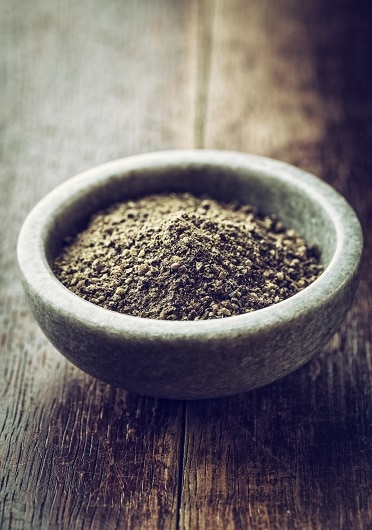 is an alkaloid found in black peppercorns. Recently it has become a popular supplement. Why? Because piperine has the power to enhance the absorption of nearly all nutrients. Piperine can enhance the power of magnesium, antioxidants, selenium, b-vitamins, catechins and far more to enter your bloodstream through the small intestine.
is an alkaloid found in black peppercorns. Recently it has become a popular supplement. Why? Because piperine has the power to enhance the absorption of nearly all nutrients. Piperine can enhance the power of magnesium, antioxidants, selenium, b-vitamins, catechins and far more to enter your bloodstream through the small intestine.
Magnesium and antioxidants will be far better able to lower insulin if you take piperine. Curcumin, the main ingredient of turmeric, is 2000% better absorbed when accompanied by piperine.
Hence you should either 1) season meat, fish, soup and curry with generous quantities of black pepper, or 2) take a piperine supplement such as Source Naturals Bioperine Black Pepper (amazon link).
Twenty-nine – eat sweet potatoes
Sweet potatoes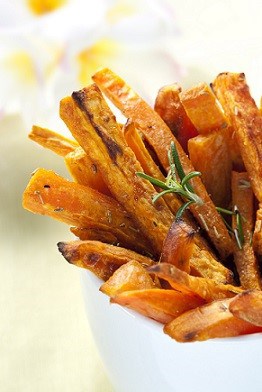 are possibly the greatest carbohydrate source in the world for an acne patient. As well as being delicious, they are free from the inflammatory proteins of grains such as gluten and lectins, they contain plenty of acne-reducing vitamin A, and are packed with carotenoid antioxidants which build a natural sunscreen into your skin. As for insulin resistance, sweet potatoes contain 12% of the RDA for magnesium per 200 grams serving and have a decent ORAC score of 766.
are possibly the greatest carbohydrate source in the world for an acne patient. As well as being delicious, they are free from the inflammatory proteins of grains such as gluten and lectins, they contain plenty of acne-reducing vitamin A, and are packed with carotenoid antioxidants which build a natural sunscreen into your skin. As for insulin resistance, sweet potatoes contain 12% of the RDA for magnesium per 200 grams serving and have a decent ORAC score of 766.
However there’s clearly some other beneficial phytonutrients; a Japanese study gathered 24 diabetic rats and 16 healthy rats and fed them either sweet potato starch or white potato starch. Those receiving the sweet potato starch had a greater improvement in their insulin status: “our results illustrated that sweet potato starch feeding for 4 wk can improve insulin sensitivity in insulin-resistant rats, possibly by improving the adipocytokine levels… and insulin signalling.”
Note that sweet potatoes should be cooked well; this deactivates their high levels of oxalic acid, which bind to minerals like magnesium and renders them useless.
Thirty – avoid trans-fats
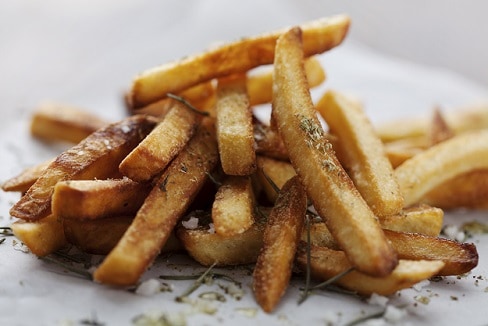 Finally, we have the real artery clogging fat, the trans-fat. Heart disease has always existed, but it only kicked off to global health threat levels in the early 20th century. Why? The common belief is that saturated fat from bacon, butter, and milk causes heart disease yet we were eating the same quantity of those foods as ever. The French eat more saturated fat than anyone and have relatively good heart health.
Finally, we have the real artery clogging fat, the trans-fat. Heart disease has always existed, but it only kicked off to global health threat levels in the early 20th century. Why? The common belief is that saturated fat from bacon, butter, and milk causes heart disease yet we were eating the same quantity of those foods as ever. The French eat more saturated fat than anyone and have relatively good heart health.
The real villain was the trans-fat, first introduced to Western markets with the wildly successful Crisco spread, which was 50% trans-fat. Trans-fats both increase “bad” LDL cholesterol and decrease “good” HDL cholesterol. Our bodies basically don’t know how to handle trans-fats as they are not truly found in nature; they are manufactured in a factory with a process called hydrogenation, where an extra hydrogen bond is forced into the fat molecule.
Vitamin E – the ultimate nutrient for clogged pores
This causes endless problems, and insulin resistance is one, according to this study, this study, and this study. The solution? Simply avoid all trans-fats. Luckily they’re all found in junk processed foods which are terrible for acne anyway. Natural trans-fats in meat and dairy are not identical to industrial trans-fats and are totally safe. Find out more here.
Conclusion
I absolutely recommend that you balance your carbohydrate intake with your energy expenditure in the long run. Emptying bursting muscle glycogen stores is the number one way to get them starving for glucose and hence sensitive to insulin again.
I also strongly recommend that you fix your magnesium, vitamin D and zinc levels, as they are critical for so many other aspects of acne prevention such as lowering inflammation and sleep deprivation. Getting more antioxidants is the second most important acne strategy full-stop, after tackling chronic inflammation.
From then on though, you can simply take your pick of the strategies above, and relax as your insulin falls and your skin slowly becomes less and less oily.
NEXT: get the complete strategy for clearing acne naturally
Thanks for reading!
You said carbs are not a problem but you cut them out of your diet and you mainly eat fat as source of energy.So are you really insulin sensitive?It seams to me that you effectively avoided problem but maybe not fixed it completely.
What are you going on about? Reread the article.
Hi I’m very skinny and want pack on some muscle but putting a weight up and down just seems like a waste of costly energy that serves no practical purpose whatsoever. So I’m wondering is there a better way to build muscle that doesn’t waste energy? You say that people living in an ancestral environment had much higher testosterone yet I’m pretty sure they didn’t spend their energy from the few foods they gathered by putting weights up and down.